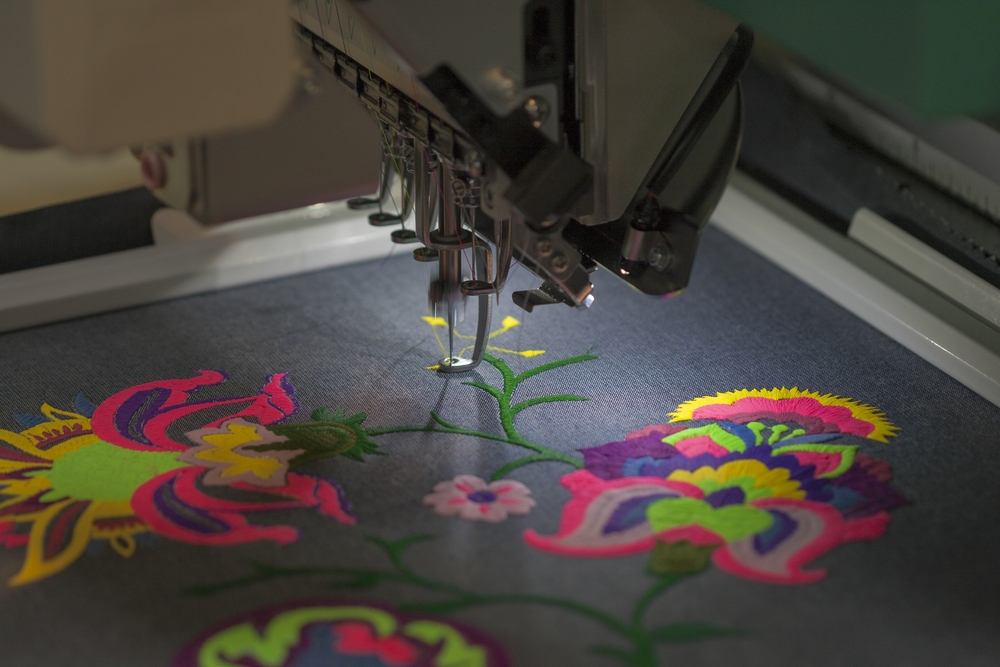Mastering the Embroidery Digitizing Process: Your Ultimate Overview
Embroidery digitizing is a thorough craft that needs accuracy and proficiency to convert detailed styles right into electronic layouts for device needlework. As artisans get started on this journey to understand the needlework digitizing process, a thorough understanding of the fundamentals establishes the structure for quality.

Comprehending Embroidery Digitizing Basics
Embroidery digitizing essentials develop the structure whereupon complex styles are translated into machine-readable formats for exact stitching. This first action in the needlework digitizing procedure is important for making sure that the last embroidered item is a faithful depiction of the initial design. Recognizing embroidery digitizing fundamentals entails comprehending key principles such as stitch kinds, sew instructions, thickness, rug, and draw settlement.
Sew kinds play an important function in identifying the aesthetic and textural result of the stitched style. By choosing the appropriate stitch type, whether it be satin, fill, or running stitch, digitizers can achieve the preferred effect and enhance the total top quality of the embroidery. In addition, sew direction affects the flow and dimension of the style, while density identifies the spacing and insurance coverage of the stitches.
In addition, rug sewing offers stability to the style by securing the textile and stopping distortion during the needlework process. Draw payment is an additional necessary consideration to neutralize the natural tendency of material to agreement when stitched. Understanding these embroidery digitizing essentials is essential for developing professional-quality embroidered items.
Picking the Right Digitizing Software
Choosing the ideal digitizing software is a critical decision that dramatically impacts the efficiency and high quality of the needlework digitizing procedure. Digitizing for Embroidery. When picking the right digitizing software application, it is important to consider elements such as the complexity of designs you plan to create, the user-friendliness of the software application, the level of client assistance used, and the compatibility with your needlework equipment
There are numerous digitizing software options available in the market, ranging from basic programs for beginners to advanced software for professional digitizers. Some popular choices include Wilcom EmbroideryStudio, Hatch Needlework Software Program, and PulseID. These software program plans supply a vast array of devices and attributes to aid you produce complex styles easily.
Before making a decision, it is advisable to explore the various software program alternatives via cost-free tests or demonstrations to identify which one best matches your demands. Furthermore, reading reviews and looking for referrals from seasoned digitizers can provide beneficial insights right into the staminas and weak points of each software (Digitizing for Embroidery). By thoroughly evaluating your needs and contrasting the features of various digitizing software application, you can make an informed selection that improves your needlework digitizing process
Digitizing Devices and Methods

Optimizing Layout Setup for Needlework
Grasping the intricacies of style setups is fundamental in attaining optimal results in the needlework digitizing process, building upon the structure laid by comprehending digitizing devices and methods. When maximizing style setups for embroidery, it is necessary to consider aspects such as stitch kind, density, rug, draw compensation, and enrollment. Enrollment settings line up various elements of the design precisely, see this keeping overall style honesty.

Troubleshooting Common Digitizing Issues
When encountering typical digitizing issues throughout the embroidery process, it is vital to comprehend the origin triggers and apply efficient remedies quickly. One common issue is stitch density concerns, where stitches might be too thick, causing the fabric to pucker, or also sparse, causing voids in the style. Changing the stitch density settings in the digitizing software program can help resolve this problem.
One more regular obstacle is string breaks throughout the embroidery process. This can occur because of different factors such as wrong stress setups, plain needles, or making use of low-quality thread. Ensuring proper maintenance of the embroidery device, including routine needle modifications and tension modifications, can lessen the incident of string breaks.
Additionally, layout enrollment mistakes can lead to misaligned aspects within the needlework style. Inspecting the style positioning in the digitizing software application and making required modifications before stitching can help in preventing this concern. By resolving these usual digitizing concerns immediately and successfully, you can make certain a smoother needlework procedure and top notch ended up products.
Final Thought
To conclude, mastering the embroidery digitizing procedure needs a solid understanding of the basics, the right selection of software program, and expertise of tools and techniques. Optimizing layout setups and fixing common digitizing issues are crucial action in making certain high-quality needlework results. By following Go Here these actions faithfully, one can attain accuracy and effectiveness in the digitizing process.
Comments on “Finest Digitizing for Embroidery: Improve Your Jobs”